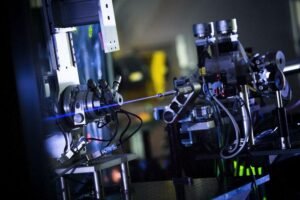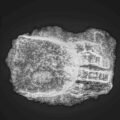German researchers hoping to be the first to successfully measure quantum flickering directly in a completely empty vacuum are setting their sights on 2024.
If successful, the first-of-their-kind experiments are expected to either confirm the existence of quantum energy in the vacuum, a core concept of quantum electrodynamics (QED), or potentially result in the discovery of previously unknown laws of nature.
Quantum Flickering, Ghost Particles, and Energy in the Vacuum
Physicists have long accepted the concept that the vacuum is not completely empty but instead contains energy at the quantum level that ‘flickers’ in and out of existence. Some experiments have even measured the effects of this quantum flickering indirectly by the changes they make to the electromagnetic fields of certain tiny particles. Still, measuring such minuscule changes to the background energy in an otherwise empty vacuum that is completely void of any particles has proven particularly elusive.
Now, a team of researchers from the Helmholtz-Zentrum Dresden-Rossendorf (HZDR) non-profit research consortium says they are finally ready to try to measure the phenomenon directly, thereby confirming QED in the process. They also point out that results inconsistent with QED theories could reveal a whole new set of exotic “ghost” particles called axions or even entirely new laws of nature altogether.
Sometimes, Two Lasers Are Better Than One
“The underlying principle is that an ultra-powerful laser fires short, intense flashes of light into an evacuated stainless steel chamber,” the researchers explain in a press release announcing the planned experiments. “The aim is to manipulate the vacuum fluctuations so that they, seemingly magically, change the polarization of an X-ray flash from the European XFEL (the largest X-ray laser in the world), i.e., rotate its direction of oscillation.”
“It would be like sliding a transparent plastic ruler between two polarizing filters and bending it back and forth,” explained HZDR theorist Prof. Ralf Schützhold in the same release. “The filters are originally set up so that no light passes through them. Bending the ruler would now change the direction of the light’s oscillation in such a way that something could be seen as a result.”


Seeing such a change would essentially confirm the presence of quantum flickering even in the absence of any other particles, something that has long been theorized but never actually proven. Still, the team notes that spotting such a minute fluctuation could prove particularly elusive, even with the world’s most powerful X-ray laser.
“The signal is likely to be extremely weak,” explained Schützhold. “It is possible that only one in a trillion X-ray photons will change its polarization.”
Such a change might be so small that it could be ‘lost in the noise,” they explain. So, to improve their chances, the researchers have decided on a novel solution: using two laser pulses instead of one.
Specifically, they will actually shoot a pair of optical lasers into the chamber, then send the x-ray laser pulse through the spot where the optical lasers intersect. If done correctly, the researchers say the colliding optical lasers should ever so slightly deflect the X-ray pulse in the same manner that X-rays are defected by natural crystals. In this case, however, the colliding optical lasers create a temporary “light crystal” that the researchers believe will have the same ultimate effect.
“That would not only change the polarization of the X-ray pulse but also slightly deflect it at the same time,” explains Ralf Schützhold. This unique combination, he adds, “could increase the chances of actually being able to measure the effect.”
Researchers Set to Begin Hunt in 2024
Moving forward, the team says they plan to test a number of different angles for the optical laser collisions before settling on the ideal one to create the ideal light crystal effect for their experiments. They may also try lasers of different wavelengths (colors), which would also increase the chances of detection by altering the energy of the x-ray flash slightly, although Schützhold admits that is “technically quite challenging” and therefore “may only be implemented at a later date.”
As for the experiments themselves, the researchers say they are shooting for some time in 2024. And even if they are unable to measure quantum flickering directly, tangible results of a different kind could reveal something even more incredible, including the detection of purely theoretical axions.
“And that,” says Schützhold, “would be a clear indication of additional, previously unknown laws of nature.”
Christopher Plain is a Science Fiction and Fantasy novelist and Head Science Writer at The Debrief. Follow and connect with him on X, learn about his books at plainfiction.com, or email him directly at christopher@thedebrief.org.

